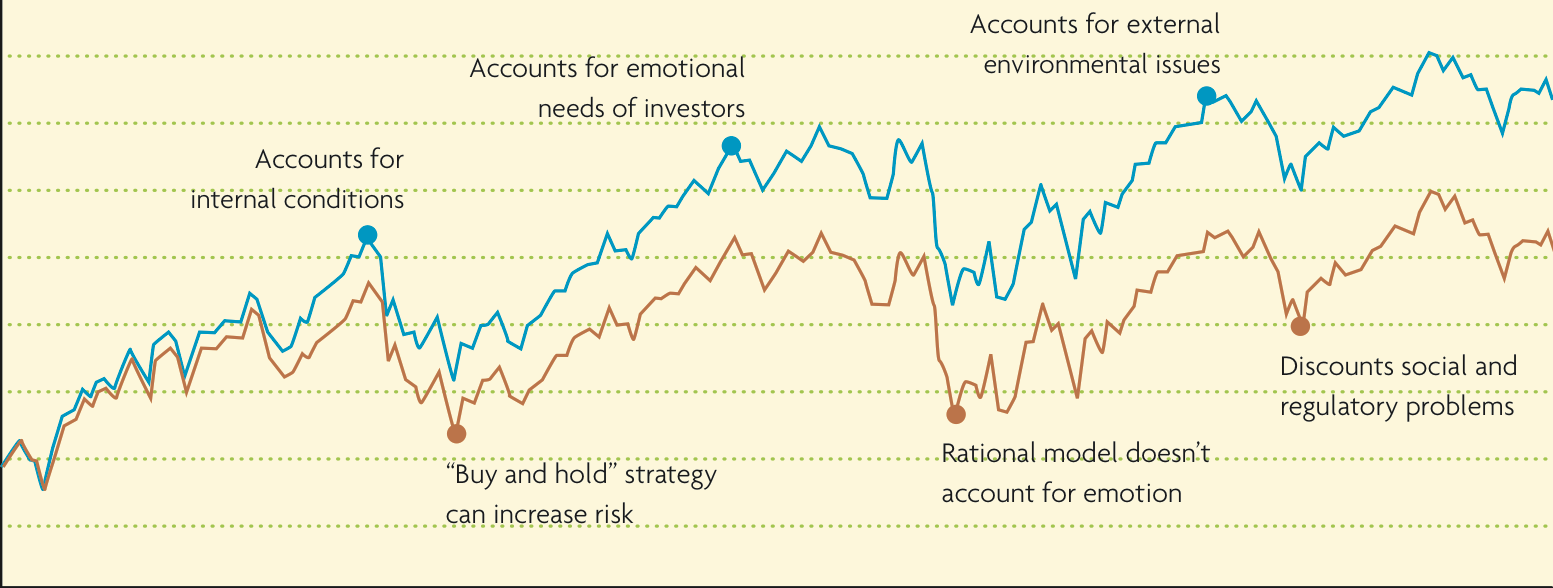By Ken Edwins

As someone interested in sustainable investing, you probably have sought to get good returns while supporting companies that have shown their ability to contribute to the sustainability of the planet.
To achieve these goals you have probably utilized a classic investment theory developed by Harry Markowitz more than 60 years ago. You may not have heard of Markowitz, but you probably have followed his advice to diversify your portfolio. He believed different types of stocks respond differently to changing market conditions. Some will go up faster when the market goes up and some will go down slower when the market goes down. By diversifying your portfolio with different stocks you reduce the risk of losing all of your wealth and reduce your portfolio’s volatility.
This theory has led to a “buy and hold” strategy that many investors follow. You learned to buy and hold because you were told it’s the best way to reduce volatility and get a good return. This “buy and hold” strategy is also a reflection of an extension of Markowitz theory called Capital Asset Pricing Model (CAPM). The model maintains it is possible to make a rational determination of the fair-market value of a stock.
As you may have experienced during the housing and stock market crisis of 2007-2008, the equity markets are not always rational or efficient. Greed, fear and high-frequency trading often can trump the rational brain, so markets can become irrational and volatile.
Recently, the “buy and hold” strategy has come under criticism from the field of behavioral finance/neuroscience. One area of criticism is that diversified portfolios go down when the market suffers a deep correction. At a time when short-selling might help a portfolio’s return, the individual investor has been led to believe that short-selling adds risk. In fact, short-selling can help reduce risk.
The second area of criticism is that Markowitz theory and CAPM exclude consideration of the broader social and regulatory environment when making investment decisions. This means, for example, that the effects of the deregulation of the financial services industry in 1999 would and have been discounted or ignored as a potential problem for investors.
The answer to these two issues is to rely on a model of investment management that is more adaptive to market conditions. This model seeks to integrate market data in a way that neuroscience has demonstrated people need to make good investment decisions. This more adaptive model reduces emotions and takes into account internal market conditions, such as technical data, and external environmental issues, such as global warming and geopolitical conflicts. This approach is both more organic and sustainable as an investment process because it accounts for the financial markets, the external environment, and the internal emotional needs of the individual investor. It will give investors the tools they need to recognize and manage both the external and the psychological factors that can impede their success.
Ken Edwins ChFC is a financial services representative and senior financial planner with Sonoran Ridge Wealth Management, an office of Metropolitan Life Insurance Company. Metlife.com






